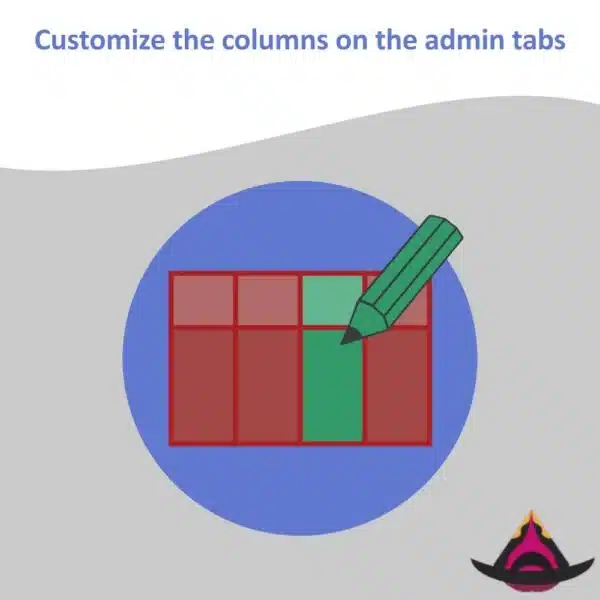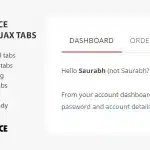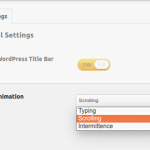Tailoring the columns in the admin lists Nulled represents a robust capability that empowers website managers to modify the data exhibited in their administrative dashboards. Whether you’re overseeing an eCommerce platform, a personal blog, or a business website, the option to tailor these columns can significantly boost your productivity, facilitating quicker access to the information you frequently require. This article will delve into the essential aspects of adjusting columns on admin lists, examine who stands to gain from this feature, highlight its advantages and disadvantages, and juxtapose it with other well-known customization alternatives available.
Modifying columns on the admin lists Free Download is a feature that enables administrators to alter the structure and content of columns visible in the backend lists of a website or application. These lists could encompass a range of elements, from product inventories and order summaries in an eCommerce site to post lists and user data in a content management system (CMS) like Prestashop. By adjusting these columns, administrators can select the most pertinent data to display, conceal irrelevant information, and even introduce new columns that present additional data points.
This capability can be especially advantageous for enhancing productivity, as it allows administrators to swiftly access the most relevant information without having to sift through unnecessary data. Additionally, it improves the user experience by offering a more organized and streamlined interface that meets specific needs.
1. Column Selection and Ordering
A key feature of adjusting columns on admin lists is the capacity to choose which columns are visible and their arrangement. This functionality permits administrators to prioritize the details that are vital for their daily tasks. For example, in an eCommerce setup, you might prefer to show product names, SKUs, inventory levels, and prices while hiding columns like product dimensions or weight if they are not immediately necessary.
Moreover, the capability to rearrange columns enables you to position the most crucial data points at the forefront, making it simpler to scan through lists and quickly locate the information you require.
2. Custom Columns and Data Integration
Besides selecting and arranging existing columns, many platforms provide the option to incorporate custom columns into your admin lists. This feature is particularly valuable for organizations that need to monitor extra data not included in the default settings. For instance, in a Prestashop blog, you might introduce a custom column displaying the SEO score for each post, or in an eCommerce environment, you could add a column indicating the product supplier.
Custom columns can be established using custom fields, third-party plugins, or through code changes. This level of customization allows administrators to seamlessly integrate their specific data needs into their admin interface, simplifying the management and analysis of information.
3. Filter and Search Functionality
Altering the columns on admin lists often coincides with improved filtering and search features. Once you’ve configured your optimal column layout, you can generally filter and sort data based on the selected columns. This functionality facilitates more precise data management, allowing administrators to swiftly find specific entries or groups of entries based on criteria such as date, category, user role, or custom attributes.
For instance, an administrator overseeing a large blog might filter posts by their SEO score or publication date, while an eCommerce store owner could sort products by inventory level or sales performance. These filtering capabilities make it easier to handle extensive datasets without the need to export data to external tools like spreadsheets.
Who is Customizing Admin Columns Ideal For?
Customizing the columns on admin lists is particularly suitable for website managers, eCommerce store operators, content supervisors, and anyone tasked with managing substantial amounts of data in an administrative backend. This feature is especially useful for individuals who need to frequently access specific data and aim to streamline their workflow by minimizing the presence of irrelevant information.
For example, a WordPress site manager overseeing multiple contributors might want to display author names, post statuses, and comment counts directly in the post list. An eCommerce manager could utilize this feature to monitor stock levels, prices, and sales performance at a glance. Essentially, any role that involves regular interaction with backend data can benefit from this customization.
Pros and Cons of Customizing Admin Columns
Pros:
- Boosted Efficiency: By customizing the columns to showcase only the most pertinent information, administrators can considerably accelerate their workflow.
- Enhanced Data Management: The capability to introduce custom columns and incorporate additional data points enables more thorough data management and analysis.
- Improved User Experience: A tidy, organized admin interface tailored to specific needs simplifies navigation and data management for administrators.
- Greater Flexibility: Customizable columns provide adaptability in how data is presented, allowing administrators to reshape the interface to meet their unique workflows and business demands.
Cons:
- Risk of Overcomplication: While personalization can improve efficiency, adding excessive custom columns or overloading the interface with data may result in a cluttered and confusing admin dashboard.
- Learning Curve: Depending on the platform or tools utilized, setting up custom columns may require some technical expertise, especially if code modifications are necessary.
- Compatibility Challenges: Not all platforms or plugins support extensive customization, and integrating third-party solutions may lead to compatibility problems or conflicts.
Comparison with Popular Alternatives
1. Admin Columns Pro (WordPress)
Admin Columns Pro is a widely used Prestashop plugin that provides extensive options for customizing admin columns. It allows users to add, remove, and rearrange columns, as well as create custom columns using custom fields and third-party plugins like WooCommerce. Although Admin Columns Pro features a user-friendly interface and robust functionality, it is a premium plugin, which may be a consideration for those on a budget.
2. WP Sheet Editor
WP Sheet Editor is another Prestashop plugin that enables administrators to manage their data in a spreadsheet-like format. While it provides some column customization features, its primary focus is on bulk editing and data management, making it more suitable for users needing to implement large-scale changes to their data. For those seeking a more straightforward column customization tool, Admin Columns Pro or native WordPress options might be more favorable.
3. WooCommerce Custom Product Tables
For users of WooCommerce, the WooCommerce Custom Product Tables plugin delivers extensive customization options for product lists, including the ability to add custom columns, filter products by custom attributes, and sort data. This plugin is specifically tailored for eCommerce platforms and offers deep integration with WooCommerce features, making it a compelling alternative for online retailers.
4. Advanced Custom Fields (ACF)
Advanced Custom Fields (ACF) is a powerful WordPress plugin that allows users to incorporate custom fields into posts, pages, and various content types. While ACF is primarily utilized for adding custom data to content, it can also be employed to create custom admin columns. However, ACF requires more technical knowledge and setup compared to dedicated column customization plugins like Admin Columns Pro.
Modifying the columns Nulled is a valuable feature that can significantly enhance the efficiency and usability of your website’s backend. Whether you are managing a blog, an eCommerce site, or a corporate platform, having the capability to customize your admin interface to display the most relevant data is essential. By considering the advantages and disadvantages and comparing it with other popular customization tools, you can identify the best strategy for optimizing your admin dashboard and enhancing your workflow.










